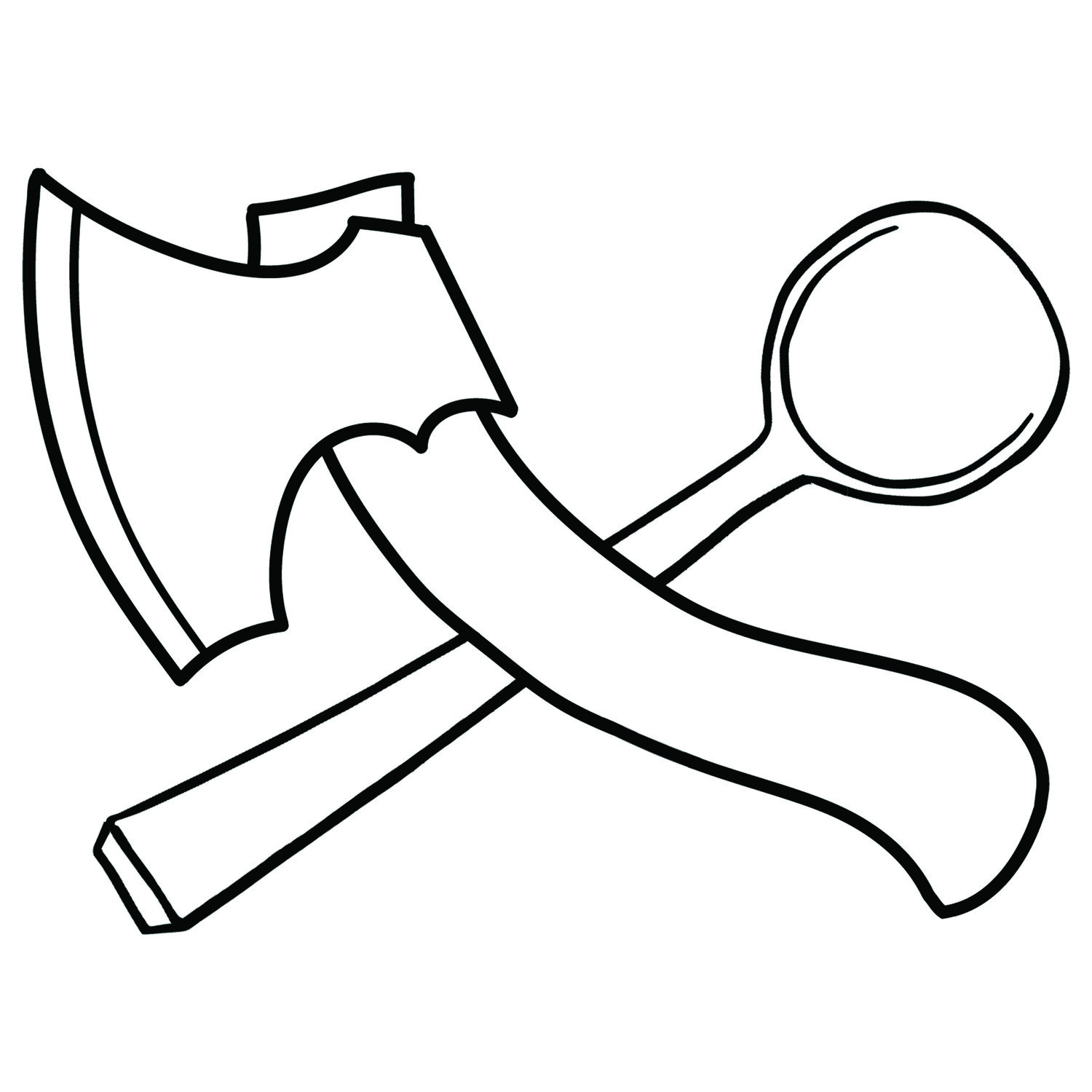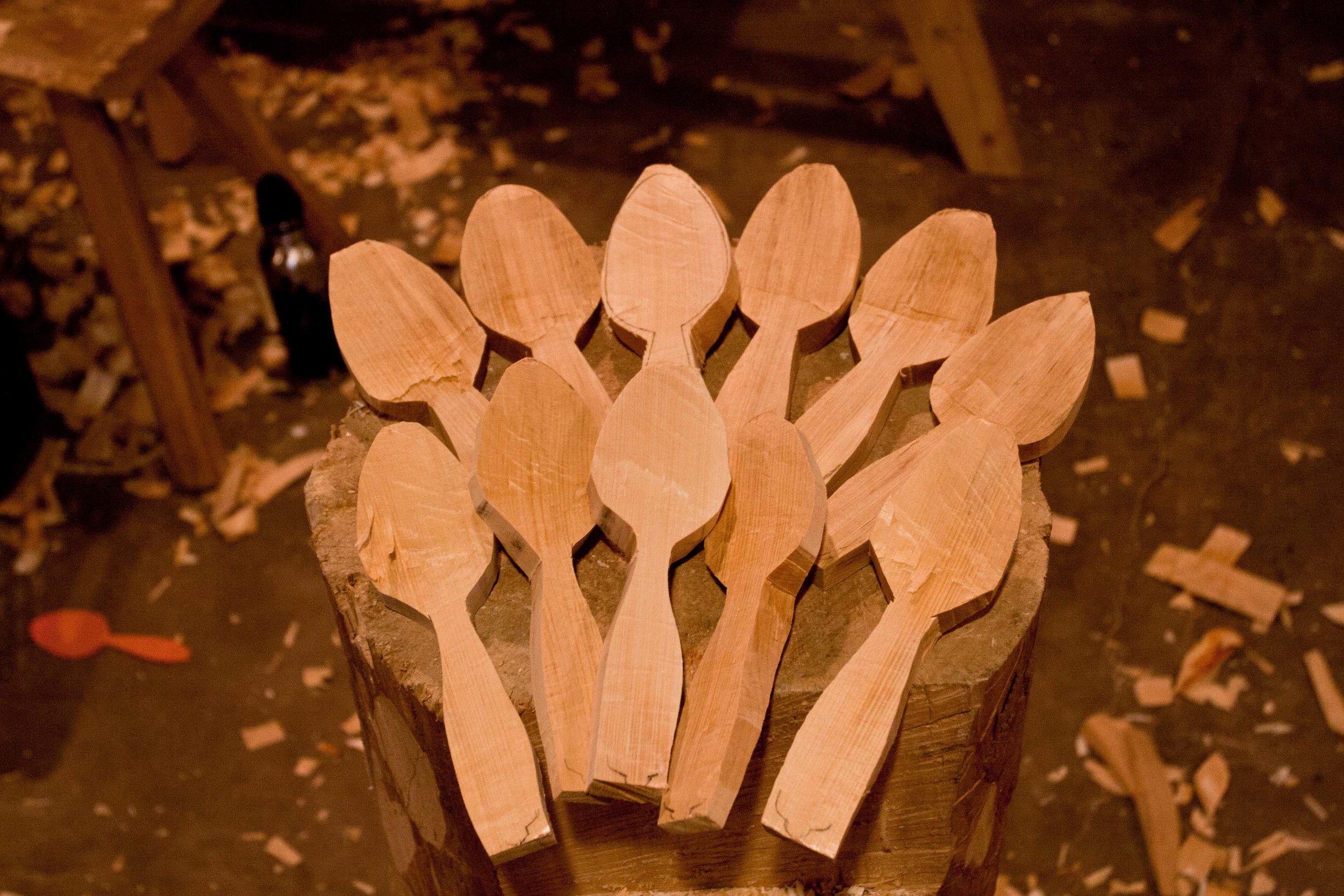Different Trajectories
Apprenticeship Day 27
At the Monday morning meeting Jarrod and Jasmine told me about their time at the American Swedish Institute this past weekend. Jarrod has one of his bowls in the 101 Bowls exhibit. Again, I think it was the expert roughing out of this bowl that probably had a major contribution to the sweetness of the final product. At least, that's what I'm telling myself.
One of the other exhibits there is a collection of Jogge Sundqvist's work. So he was there, along with several other craftspeople Jarrod knew and respected. Jarrod's conversations with these folks led to us talking about the different trajectories we are all on as craftspeople. Jogge creates one of a kind pieces, with a lot of whimsy. They're a lot of fun, but have featured in conversations between Jarrod and myself on the fuzzy gray zone between art and craft. Other craftspeople there make fantastic pieces but aren't relying on craft for an income.
A great example of a very talented craftsperson who doesn't rely on craft for their income would be David Fisher. He makes beautiful hand hewn bowls. Last I knew, his full-time job was as a school teacher. I daresay that not having to make his living from woodworking influences his work. He can take longer, not being so concerned with hourly rate at which he's working. If he wanted to, I'm sure he could transition to making his income from craft, but it would probably change the way he makes his work.
Jarrod's work is utilitarian craft, made in batches, as it was done pre-industrialisation. I have a similar craft aesthetic to Jarrod. I really like objects that are beautiful because they are functional. In fact, I have a theory that any object that has a high level of functional utility is going to be beautiful. Jarrod doesn't tend to add much whimsy to his work, but it all works really well.
All of this is to say that craftspeople are all on different trajectories, and comparing ourselves to each other can be tricky if we don't consider all the different factors. The conversation we had this morning reminded me of this article on the Helsinki Bus Terminal Theory. This article, and the morning's conversation, was a good one for me. For the last three months I've been riding a bus driven by Jarrod. When I eventually hop off, I'll probably continue on foot after the bus for a while. My work will inevitably resemble Jarrod's. But I'll eventually find an interesting little side street to wander down, on my own.
The original plan for this week was for forge some more turning hooks. I was really looking forward to this, as forging your own hooks is a big part of being a bowl turner. Having a selection of different hooks to deal with different aspects of turning is essential. There's no-one out there making and selling a wide selection of hooks. Besides, being able to make exactly the hook you need is a useful skill.
Unfortunately, due to circumstances outside our control, forging will have to wait until next week. This week the focus in on finishing off the last remaining boxes for the February sale, getting ready for Lamhog pre-orders and making spoons for Spoonageddon - encourgaing folks to replace plastic spoons with wooden ones.
I spent pretty much the whole day working on spoons. I split birch rounds into billets, used Jarrod's templates to draw on the design and did the rough axe work. I made about 35 billets, and axed out about 16 spoons. The axed out spoons will have a final design drawn on my Jarrod. I'll carve them to what he's drawn, then he'll do the finishing touches.
Jarrod also wants me to continue to turn a bowl a day. Today's challenge was to focus on getting a great surface finish, inside and out, on an open form bowl. I had a bit of a struggle with this, as I found myself focusing on getting a smooth finish to the detriment of the bowl form. There was a fair bit of back and forth, smoothing out rough patches, only to remove too much material. That meant turning the rest of the bowl down to match the new low point, often resulting in a fresh rough patch.
When I had the bowl rough turned, and was working on correcting one of these mistakes, Jarrod, who was at his lathe, put his tool down, walked over and stood at my shoulder. Sentinel-like he stood there, silently judging my work. With his hawk-like gaze on my every twitch of the tool I felt explaining that I knew that the bowl was lumpy, that the surface wasn't finished yet. I kept turning, waiting for him to comment. Jarrod kept watching. Silent as the grave.
This continued for some time. Suddenly, without saying a word, Jarrod returned to his lathe. Evidently I wasn't doing badly enough to require correcting. Before he got back to work, I asked his advice on dealing with grain tear-out. He explained that there are three main things to focus on:
- Sharpen the tool. A blunt tool is more likely to snag on grain and tear it, rather than shear through it.
- Move the tool over the wood more slowly. This helps you take smaller cuts and to control the movement of the tool.
- Spin the bowl quicker.
He did mention a forth variable, but it's a drastic one if you're halfway through a bowl - pick a different bit of wood. Drier wood usually has less tear out, and different species are more or less prone to grain tearing out.
Jarrod then came back over to my lathe, and had a go on my bowl with the tool I was using. He noticed that the tool could do with sharpening. He also pointed out that some tear-out is deeper than others. His quick go on my bowl cleaned up some of the tear out, but still required a couple of passes from me to get under it all.
In the end I was extremely pleased with the bowl. I turned it with a smaller core. I might not be able to get a second bowl out of it, but I did it in order to focus more on the inner bowl surface. My last couple of bowls were a bit rough on the inside, so Jarrod encouraged me to not worry about nesting and focus instead on getting an nice inner surface.


